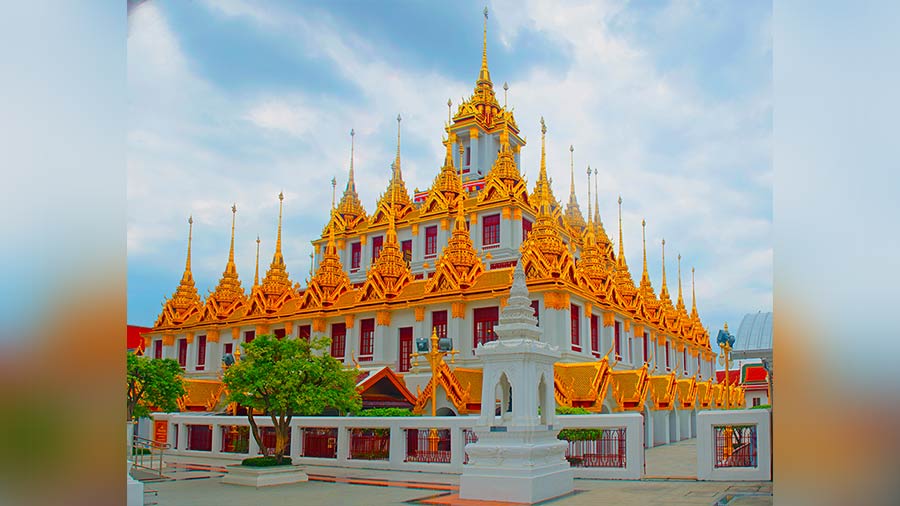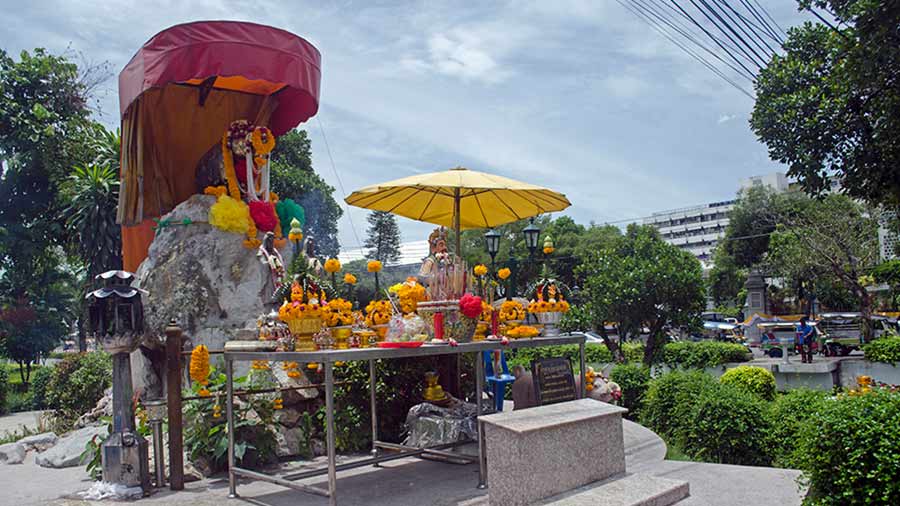Although the words 'Loha Prasat' or Iron Castle has an Indic origin, it actually refers to a prominent landmark in the heart of Bangkok. Though it is officially known as Wat Ratchanatdaram, the locals prefer to call it Loha Prasat because of the black and golden metal spires, which give the structure a stunning look. The origin of the building dates back to 1846 during the reign of King Rama III (reign: 1824 – 51) and it was built in honour of his favourite granddaughter Somanat Watthanawadi. Rama III planned the temple on the lines of two other similar structures located in Shravasti, India and Anuradhapura, Sri Lanka. However, it was not completed during his reign.

The statue of King Rama III with the Loha Prasat complex in the background
Rama III’s successors did put in some effort to complete the construction of the temple, but due to some problems and obstacles, it was never completed. It was only in the 1960s, during the reign of King Rama IX (reign: 1946 – 2016), the construction resumed under the supervision of the Fine Arts Department. In 1995, a Buddha relic was enshrined in the top-most pinnacle of Loha Prasat. Finally in 2007, Loha Prasat was finally completed. By the time of its completion the two structures after which Loha Prasat was replicated had collapsed. Thus, it has the distinction of “one of its kind in the whole world.”
Loha Prasat is unique and different from the thousands of temples that dot the Bangkok landscape. The seven-tiered structure rises to a height of 112 feet and is topped with 37 mandap-style spires. The number 37 represents the 37 virtues that are required to reach enlightenment. Out of the 37 spires, 24 are at the lower level, 12 at mid level and one at the top housing the Buddha relic. The glittering metallic spires give the structure a stunning look.

The Buddha statue inside the assembly hall
Today, Loha Prasat towers behind the statue of its initial creator Rama III. The seated statue of Rama III is located next to the royal court, complete with decorative pavilions. The Loha Prasat compound contains several other structures. There are three structures on the eastern side serving as assembly halls. The central hall is accessible and houses a giant golden statue of Buddha.
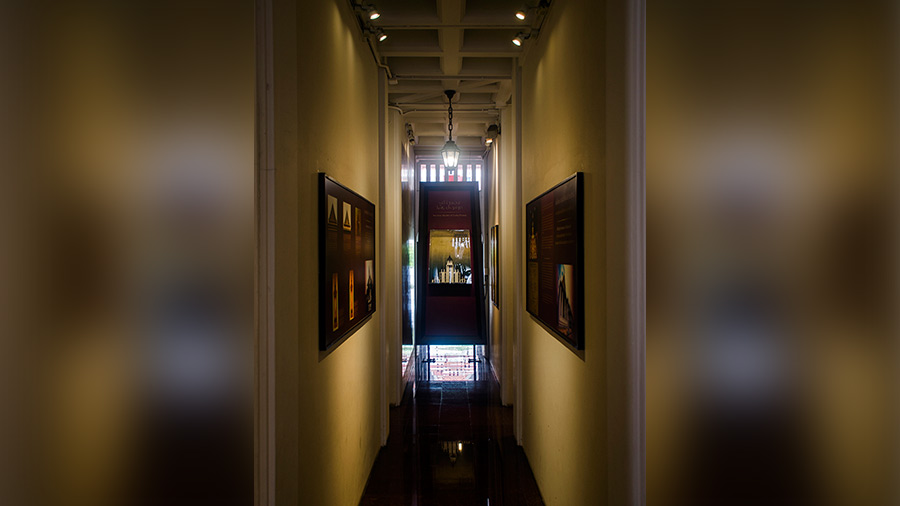
A view inside the assembly hall
The Loha Prasat towers over the hall and the upper floors are accessible by a flight of spiral staircase, located at the centre of the structure. The interior hosts a permanent exhibition on Loha Prasat, showing the history and the architectural details of the unique structure with photos and illustrations. The inner periphery of each floor is lined with Buddha statues, showing Buddha in different postures.
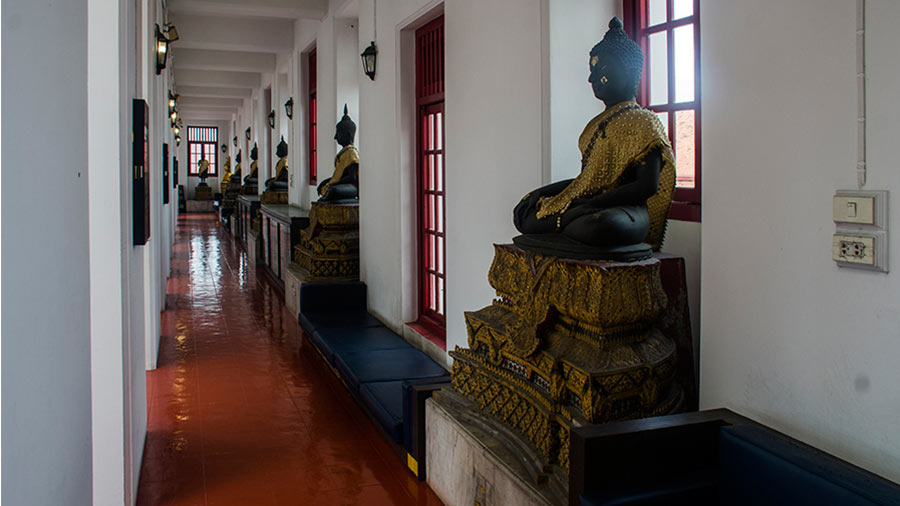
Many statues of the Buddha are kept in the gallery
The spiral staircase finally leads to the viewing platform offering a 360 degree view of Bangkok. However the spires at the middle level do obstruct the views to some extent. There are four bi-lingual (Thai and English) plaques at the four corners providing information about the landmark. A short flight of stairs leads to the Buddha relic housed beneath the topmost spire.
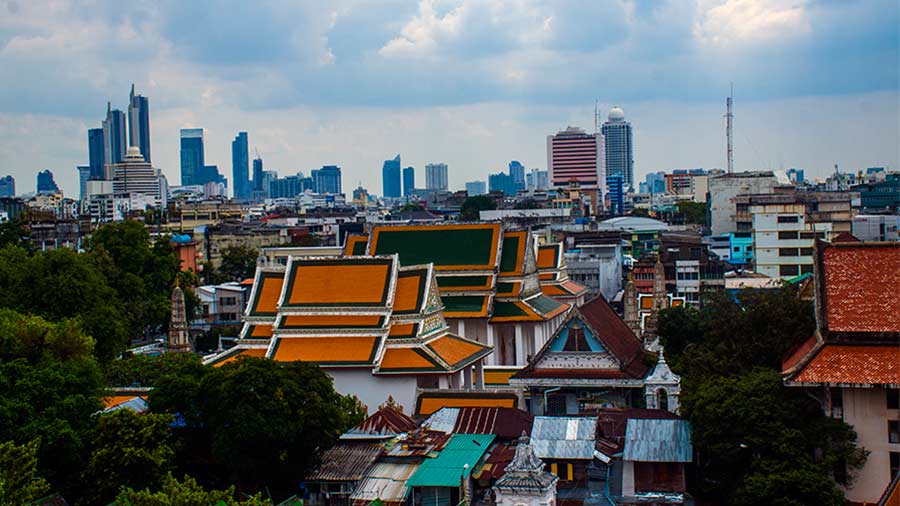
A view from the top-most tier of Loha Prasat
Loha Prasat is located in a prime tourist area in Bangkok, with nearby prominent tourist spots like Golden Mount (900m) and Grand Palace (2km) away, but in spite of its location, it is hardly visited by tourists.
Things to remember:
- Open all days from 9am to 6pm
- There is no entrance fee. However, a donation of 20 Bhats is advisable for foreigners
- There is no restriction in photography
- Unlike other Thai temples there is no strict dress code, however shorts, short dress and sleeveless are not recommended
